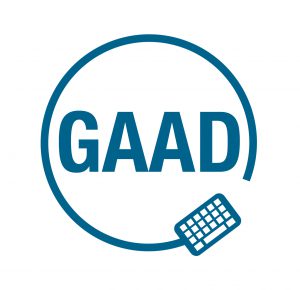May 17th is the seventh annual Global Accessibility Awareness Day (GAAD), a day to think about how people with disabilities interact with the digital environment.
As websites, apps, and mobile devices become central to our lives, improving access to information through digital accessibility is as important as removing barriers in the physical environment.
Although the concept continues to spread, digital accessibility is often hindered by a lack of awareness. The features that make a website accessible are not as apparent as those found at local businesses: sidewalk curb cuts, entrance ramps, and automatic door openers.
Digital Access Quick Checks
Here are five checks you can do to quickly learn something about the accessibility of any web content.
Note: These checks are not meant to be part of a comprehensive testing process; rather, they may clue you in to existing accessibility features or potential barriers to access.
- Do audio files, such as podcast episodes, come with transcripts?
- Do videos have the option to enable captions? Do those captions reflect the content of what is spoken? (YouTube’s auto-generated captions, for example, frequently contain transcription errors.)
- If you increase the browser zoom to 200%, is all content still readable and functional?
- Can you move through the all interactive elements (links, form fields, on-page controls, etc.) on the page using the TAB key? Some form fields, such as radio buttons, require additional commands, but can you tab to each group of buttons?
- As you are tabbing through page elements, is there a visual focus indicator that shows you where you are?
If you answered “No” to any of these questions, the content you reviewed probably has barriers to access for people with disabilities.
If you answered “Yes” to any of these questions—Congratulations!—you have increased your awareness of an accessibility feature.